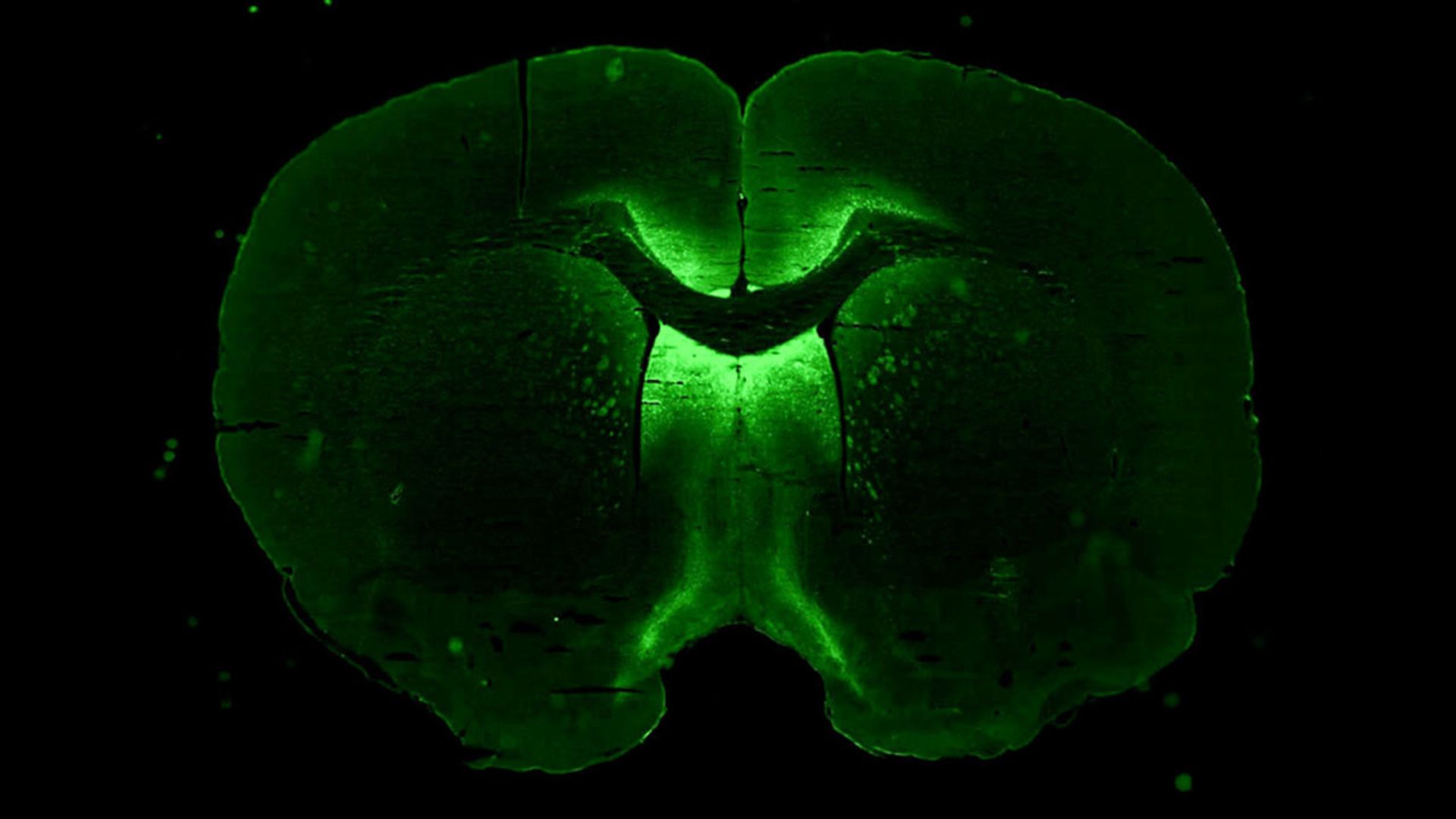Spherical 'minibrains' to be grown on the International Space Station
An upcoming resupply mission to the International Space Station will include stem cells destined to be grown into tiny, 3D models of the human brain.

Stem cells destined to be grown into tiny, simplified, spherical versions of the human brain will soon be launched to the International Space Station (ISS).
In preparation for their journey to space, the cells were derived from adult human skin cells, according to a statement from the ISS National Lab, a U.S. government-funded national laboratory. The resulting stem cells are known as "induced pluripotent stem cells," which, under the influence of various chemical cues, can be made to transform into any type of cell in the body.
In this instance, once aboard the ISS, the cells will be coaxed to form neurons, the cells that send electrical and chemical signals in the brain, as well as microglia and astrocytes, two additional cell types found in the brain that perform a variety of tasks, including defending the brain from infection and providing structural support.
Together, these three cell types will "self-assemble," or essentially glom together, into small spheres — appropriately known as "spheroids" — that can be used to model human brain diseases and to test drugs.
Related: Cerebral organoids: What are lab-grown 'minibrains'?
"The U.S. Food and Drug Administration (FDA) has decided that human data is preferable to animal data, so in the future, we could see more and more approvals based on nonanimal disease modeling," Shane Hegarty, chief scientific officer for Axonis Therapeutics, the biotech company behind the spheroids, said in the statement. The FDA recently declared that it will no longer require new drugs to be tested in animals before being approved, in part because technologies like spheroids and slightly larger, more-complex models called organoids have emerged as alternative options for drug testing.
"This experiment could help with that, as it uses engineered human tissue as opposed to rodent models," Hegarty said.
Sign up for the Live Science daily newsletter now
Get the world’s most fascinating discoveries delivered straight to your inbox.
Under Earth's gravity, spheroids can be challenging to grow in their desired, 3D shape, so the team will be assessing how well the minibrains grow under the microgravity of the ISS, according to NASA. In addition to growing the spheroids, the team will be testing a gene therapy on the 3D models. The therapy is designed to affect only neurons, not other cell types, so the team will assess how precise the treatment is in traveling to and depositing its payload into only neurons.
Related: Beating 'hearts on a chip' sent to space on SpaceX's Dragon cargo ship
The stem cells will be among the cargo of the 19th Northrop Grumman commercial resupply services mission for NASA, which is scheduled to launch on Aug. 1 at 8:31 p.m. EDT from the Wallops Flight Facility in Virginia.
Other experiments being shipped on this mission include ones focused on fire suppression in space and atmospheric monitoring, according to NASA. In addition, a memory card containing digital artworks by students, such as pictures and poetry, will be delivered to the ISS.

Nicoletta Lanese is the health channel editor at Live Science and was previously a news editor and staff writer at the site. She holds a graduate certificate in science communication from UC Santa Cruz and degrees in neuroscience and dance from the University of Florida. Her work has appeared in The Scientist, Science News, the Mercury News, Mongabay and Stanford Medicine Magazine, among other outlets. Based in NYC, she also remains heavily involved in dance and performs in local choreographers' work.










